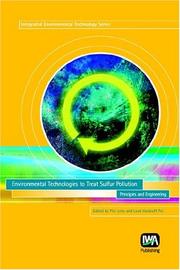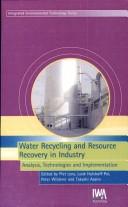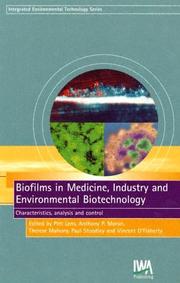| Listing 1 - 10 of 11 | << page >> |
Sort by
|

ISBN: 1900222094 1780403038 Year: 2000 Publisher: London : IWA publishing,
Abstract | Keywords | Export | Availability | Bookmark
 Loading...
Loading...Choose an application
- Reference Manager
- EndNote
- RefWorks (Direct export to RefWorks)
Pollution. --- Sulfur --- Environmental Sciences and Forestry. Environmental Management --- Environmental aspects. --- Environmental Pollution --- Environmental Pollution. --- Soufre --- Aspect environnemental. --- Pollution --- Génie chimique. --- Lutte contre. --- Génie chimique --- Génie chimique
Digital
ISBN: 9783030876333 9783030876326 9783030876340 9783030876357 Year: 2022 Publisher: Cham Springer International Publishing
Abstract | Keywords | Export | Availability | Bookmark
 Loading...
Loading...Choose an application
- Reference Manager
- EndNote
- RefWorks (Direct export to RefWorks)
The depletion of fossil fuel reserves and concerns for environmental degradation due to the fossil fuel burning have led the scientific community to look for alternative renewable energy sources. Among the available renewable energy sources, bioenergy derived from biomass and waste resources have great potential to not only prevent environmental pollution but also be a carbon neutral energy source. In addition, adaptation of this technology could streamline new green products, alternative energy sources into real-world applications and promote a circular economy towards zero-waste approach. This book tries to bridge the existing knowledge gap in the area of bioenergy resources. The first two chapters provide introduction to the anaerobic digestion (AD) technologies and direct interspecies electron transfer in AD. The next three chapters are on biomass pretreatment technologies for process improvement. The sixth to eighth chapter discuses biogas and other by-product production from specific wastes such from dairy, food and agricultural solid waste. The following two chapters focuses on the downstream processing of anaerobic digestate and on biochar production. Integration of AD in biorefineries using bioelectrochemical systems, syngas fermentation and electricity production are discussed in the next three chapters. The final two chapters elaborates on life cycle assessment of AD based technologies. .
Book
ISBN: 9783030876333 Year: 2022 Publisher: Cham Springer International Publishing :Imprint: Springer
Abstract | Keywords | Export | Availability | Bookmark
 Loading...
Loading...Choose an application
- Reference Manager
- EndNote
- RefWorks (Direct export to RefWorks)
Biomass energy --- Environmental aspects. --- Technological innovations. --- Bio-energy (Biomass energy) --- Bioenergy (Biomass energy) --- Biofuels --- Biological fuels --- Energy, Biomass --- Microbial energy conversion --- Energy conversion --- Fuel --- Microbial fuel cells --- Refuse as fuel --- Waste products as fuel --- Biomass as fuel --- Renewable fuels --- Renewable energy sources

ISBN: 1843390051 Year: 2002 Publisher: London : Cornwall : IWA Publishing, TJ International Ltd,
Abstract | Keywords | Export | Availability | Bookmark
 Loading...
Loading...Choose an application
- Reference Manager
- EndNote
- RefWorks (Direct export to RefWorks)
Water Recycling and Resource Recovery in Industry : Analysis, Technologies and Implementation provides a definitive and in-depth discussion of the current state-of-the-art tools and technologies enabling the industrial recycling and reuse of water and other resources.The book also presents in detail how these technologies can be implemented in order to maximize resource recycling in industrial practice, and to integrate water and resource recycling in ongoing industrial production processes.Special attention is given to non-process engineering aspects such as systems analysis, software tools, health, regulations, life-cycle analysis, economic impact and public participation. Case studies illustrate the huge potential of environmental technology to optimise resource utilisation in industry. The large number of figures, tables and case studies, together with the book's multidisciplinary approach, makes Water Recycling and Resource Recovery in Industry: Analysis, Technologies and Implementation the perfect reference work for academics, professionals and consultants dealing with industrial water resources recovery.
Water reuse --- Eau --- Réutilisation --- Water reuse. --- Agrotechnology and Food Sciences. Engineering --- Waste treatment --- Waste Water Treatment --- Waste Water Treatment. --- Réutilisation --- Déchets industriels --- Déchets industriels
Book
ISBN: 331958622X 3319586211 Year: 2017 Publisher: Cham : Springer International Publishing : Imprint: Springer,
Abstract | Keywords | Export | Availability | Bookmark
 Loading...
Loading...Choose an application
- Reference Manager
- EndNote
- RefWorks (Direct export to RefWorks)
This book covers the principles, underlying mechanisms, thermodynamic functions, kinetics and modeling aspects of sustainable technologies, particularly from the standpoint of applying physical, chemical and biological processes for the treatment of wastewater polluted with heavy metals. Particular emphasis has been given to technologies that are based on adsorption, electro-coagulation, bio-precipitation, bio-solubilization, phytoremediation and microbial electrolysis. Metal contamination in the environment is one of the persisting global issues. The adverse health effects of heavy metals on human beings and its impact on the environment has been well-documented. Several physico-chemical and biological technologies have been successfully implemented to prevent and control the discharge of industrial heavy metal emissions. On the contrary, metal resource depletion has also accelerated dramatically during the 20th century due to rapid advances in industrial engineering and medical sciences, which requires large amount of raw materials. To meet the global metal demand, in recent years, novel research lines have started to focus on the recovery of metals from metal contaminated waste streams. In order to conflate both metal removal and recovery, new technologies have been successfully tested, both at the lab and pilot-scale. The target audience of this book primarily comprises of research experts, practicing engineers in the field of environmental/chemical technology and graduate students.
Environment. --- Environmental chemistry. --- Environmental health. --- Waste management. --- Environmental Chemistry. --- Environmental Health. --- Waste Management/Waste Technology. --- Heavy metals --- Environmental aspects. --- Bioaccumulation. --- Environmental Medicine. --- Waste disposal. --- Chemistry, Environmental --- Chemistry --- Ecology --- Environmental quality --- Health --- Health ecology --- Public health --- Environmental engineering --- Health risk assessment --- Health aspects --- Environmental aspects
Book
ISBN: 3319611461 3319611453 Year: 2017 Publisher: Cham : Springer International Publishing : Imprint: Springer,
Abstract | Keywords | Export | Availability | Bookmark
 Loading...
Loading...Choose an application
- Reference Manager
- EndNote
- RefWorks (Direct export to RefWorks)
This book presents an assortment of case-studies pertaining to the use of sustainable technologies for heavy metal removal and recovery from mining and metallurgical wastes, construction and demolition wastes, spent catalysts and electronic wastes. Wastewaters from diverse industrial and mining activities have caused pollution problems, but these sectors also serve as a hotspot for metal recovery. Several metal removal technologies based on physical, chemical and biological processes have been successfully implemented in full-scale operation, while metal recovery, which is beneficial for economic and environmental reasons, is still limited due to challenges arising from downstream processing. For instance, microbial recovery (bioleaching) of metals from their ores is an established technology with a number of full-scale applications. Bioleaching of electronic wastes to recover metals is also a highly promising technology with low environmental impact and high cost-effectiveness; yet, this technology is still at its infancy. As the individual chapters of this book focuses on the applications and limitations of different technologies, this book will serve as an excellent resource for chemical engineers, environmental engineers, mining engineers, biotechnologists, graduate students and researchers in these areas. .
Environment. --- Environmental chemistry. --- Environmental health. --- Waste management. --- Environmental Chemistry. --- Environmental Health. --- Waste Management/Waste Technology. --- Chemistry, Environmental --- Chemistry --- Ecology --- Environmental Medicine. --- Waste disposal. --- Environmental quality --- Health --- Health ecology --- Public health --- Environmental engineering --- Health risk assessment --- Health aspects --- Environmental aspects
Digital
ISBN: 9783319586229 Year: 2017 Publisher: Cham Springer International Publishing
Abstract | Keywords | Export | Availability | Bookmark
 Loading...
Loading...Choose an application
- Reference Manager
- EndNote
- RefWorks (Direct export to RefWorks)
This book covers the principles, underlying mechanisms, thermodynamic functions, kinetics and modeling aspects of sustainable technologies, particularly from the standpoint of applying physical, chemical and biological processes for the treatment of wastewater polluted with heavy metals. Particular emphasis has been given to technologies that are based on adsorption, electro-coagulation, bio-precipitation, bio-solubilization, phytoremediation and microbial electrolysis. Metal contamination in the environment is one of the persisting global issues. The adverse health effects of heavy metals on human beings and its impact on the environment has been well-documented. Several physico-chemical and biological technologies have been successfully implemented to prevent and control the discharge of industrial heavy metal emissions. On the contrary, metal resource depletion has also accelerated dramatically during the 20th century due to rapid advances in industrial engineering and medical sciences, which requires large amount of raw materials. To meet the global metal demand, in recent years, novel research lines have started to focus on the recovery of metals from metal contaminated waste streams. In order to conflate both metal removal and recovery, new technologies have been successfully tested, both at the lab and pilot-scale. The target audience of this book primarily comprises of research experts, practicing engineers in the field of environmental/chemical technology and graduate students.
Social medicine --- Water supply. Water treatment. Water pollution --- Environmental protection. Environmental technology --- zware metalen --- thermodynamica --- milieuchemie --- milieuhygiëne --- waterverontreiniging --- milieuzorg --- afvalverwerking --- afvalwater --- afval
Digital
ISBN: 9783319611464 Year: 2017 Publisher: Cham Springer International Publishing
Abstract | Keywords | Export | Availability | Bookmark
 Loading...
Loading...Choose an application
- Reference Manager
- EndNote
- RefWorks (Direct export to RefWorks)
This book presents an assortment of case-studies pertaining to the use of sustainable technologies for heavy metal removal and recovery from mining and metallurgical wastes, construction and demolition wastes, spent catalysts and electronic wastes. Wastewaters from diverse industrial and mining activities have caused pollution problems, but these sectors also serve as a hotspot for metal recovery. Several metal removal technologies based on physical, chemical and biological processes have been successfully implemented in full-scale operation, while metal recovery, which is beneficial for economic and environmental reasons, is still limited due to challenges arising from downstream processing. For instance, microbial recovery (bioleaching) of metals from their ores is an established technology with a number of full-scale applications. Bioleaching of electronic wastes to recover metals is also a highly promising technology with low environmental impact and high cost-effectiveness; yet, this technology is still at its infancy. As the individual chapters of this book focuses on the applications and limitations of different technologies, this book will serve as an excellent resource for chemical engineers, environmental engineers, mining engineers, biotechnologists, graduate students and researchers in these areas. .
Social medicine --- Water supply. Water treatment. Water pollution --- Environmental protection. Environmental technology --- zware metalen --- milieuchemie --- milieuhygiëne --- waterverontreiniging --- biotechnologie --- milieuzorg --- afvalverwerking --- afvalwater --- afval
Dissertation
ISBN: 9789461737694 9461737696 9781138015555 1138015555 Year: 2013 Publisher: Leiden CRC Press/Balkema
Abstract | Keywords | Export | Availability | Bookmark
 Loading...
Loading...Choose an application
- Reference Manager
- EndNote
- RefWorks (Direct export to RefWorks)

ISBN: 1843390191 Year: 2003 Publisher: London : Cornwall : IWA Publishing, TJ International Ltd,
Abstract | Keywords | Export | Availability | Bookmark
 Loading...
Loading...Choose an application
- Reference Manager
- EndNote
- RefWorks (Direct export to RefWorks)
Biofilms are of great practical importance for beneficial technologies such as water and wastewater treatment and bioremediation of groundwater and soil. In other settings biofilms cause severe problems, for example in 65% of bacterial infections currently treated by clinicians (particularly those associated with prosthetics and implants), accelerated corrosion in industrial systems, oil souring and biofouling.Until recently, the structure and function of biofilms could only be inferred from gross measures of biomass and metabolic activity. This limitation meant that investigators involved in biofilm research and application had only a crude understanding of the microbial ecology, physical structure and chemical characteristics of biofilms. Consequently, opportunities for the exploitation and control of biofilms were very limited.The past decade has witnessed the development of several new techniques to elucidate the structure and function of biofilms. Examples include : the use of molecular probes that identify different microbes in complex communities as well as their metabolic functions; the use of microsensors that show concentration gradients of key nutrients and chemicals; the use of confocal laser scanning microscopy to describe the physical structure of biofilms and the development of a new generation of mathematical models that allow for the prediction of biofilm structure and function. However, much progress remains to be made in efforts to understand, control and exploit biofilms.This timely book will introduce its readers to the structure and function of biofilms at a fundamental level as determined during the past decade of research, including: Extracellular polymers as the biofilm matrix; Biofilm phenotype (differential gene expression, interspecies signalling) ; Biofilm ecology; Biofilm monitoring; Resistance of biofilms to antimicrobial agents and Biofilm abatement. Biofilms in Medicine, Industry and Environmental Technology offers a holistic and multi-disciplinary description of the topic, including biofilm formation and composition, but also biofilm monitoring, disinfection and control. All these aspects are presented from three points of views : medical, industrial and environmental biotechnological in a compact, easy to read format.
Biofilms --- Biotechnology --- Biofilms --- Biotechnologie appliquée à l'environnement. --- Biotechnologie --- Environmental aspects. --- Environmental aspects.
| Listing 1 - 10 of 11 | << page >> |
Sort by
|

 Search
Search Feedback
Feedback About UniCat
About UniCat  Help
Help News
News